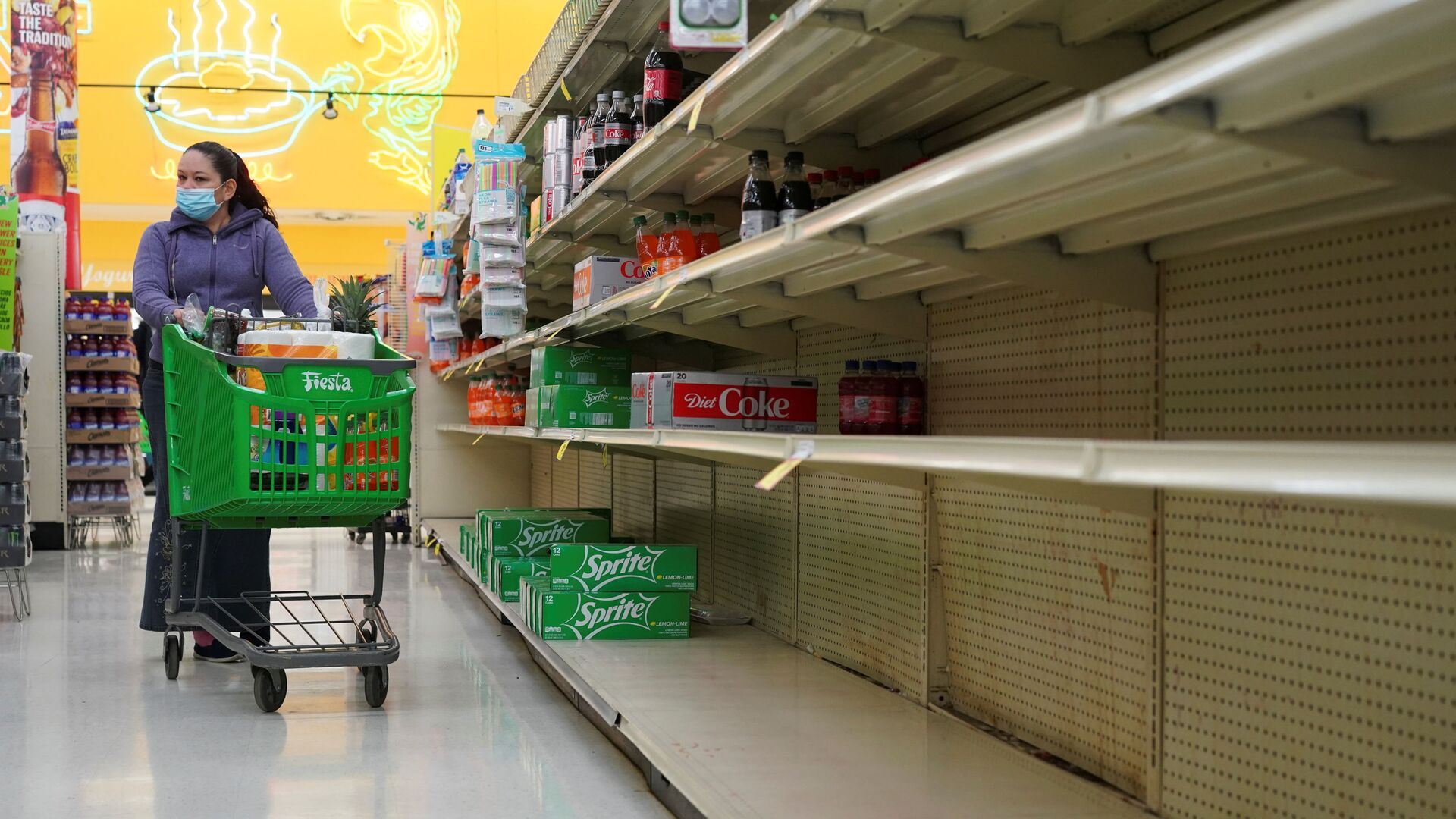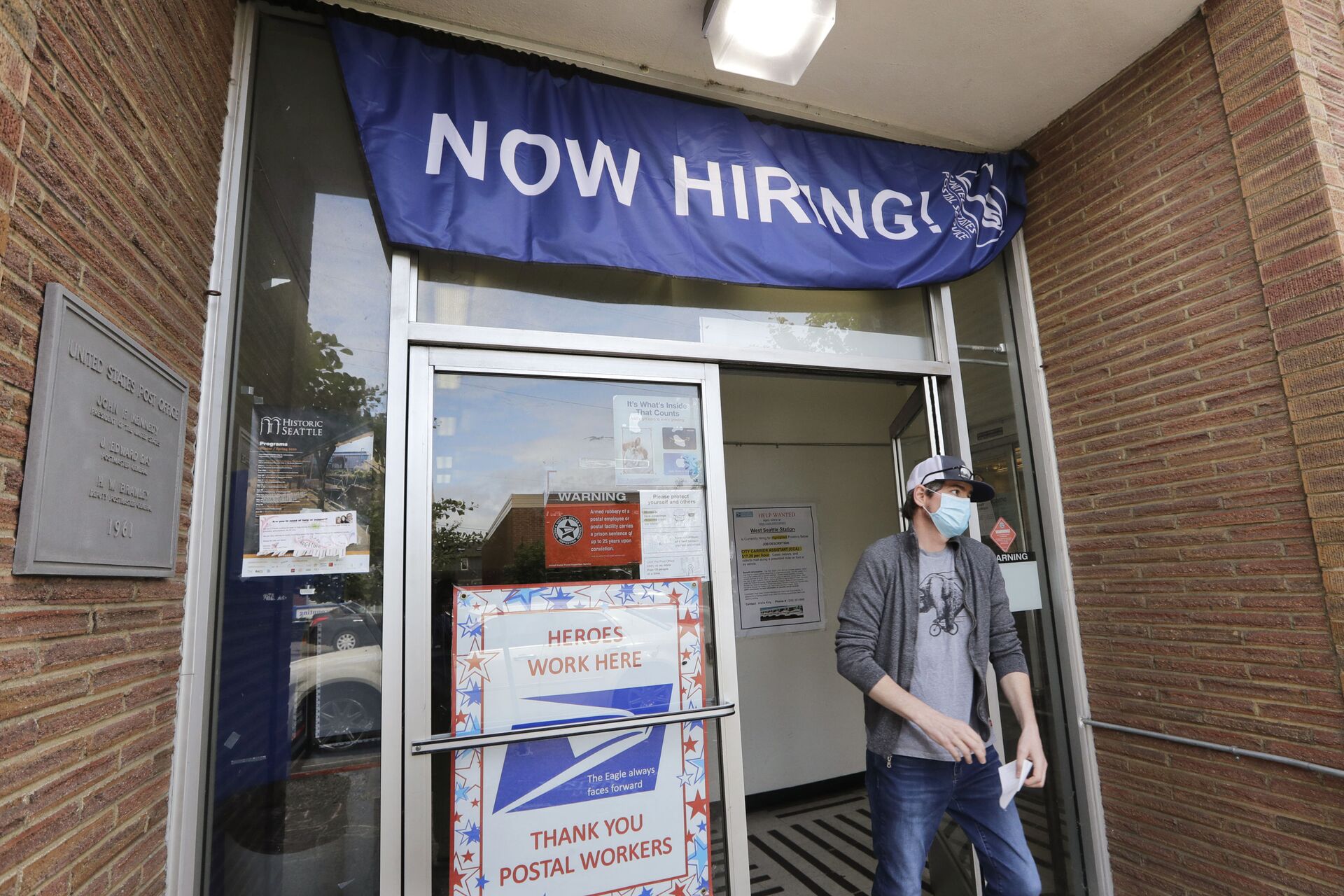US Consumer Prices Show Biggest Spike in 40 Years With 7 Percent Increase
06:19 GMT 13.01.2022 (Updated: 06:26 GMT 13.01.2022)

© REUTERS / GO NAKAMURA
Subscribe
WASHINGTON (Sputnik) - US consumer prices were up 7% in the year to December, indicating the fastest inflationary growth in four decades, the Labour Department announced on Wednesday.
"The all items index rose 7.0 percent for the 12 months ending December, the largest 12-month increase since the period ending June 1982", the department said in a news release, referring to the Consumer Price Index for All Urban Consumers.
The data, known as the CPI Index, is being closely watched by the Federal Reserve to determine the timing for the first pandemic-era interest rate hike.
The Fed dropped interest rates to virtually zero after the outbreak of the coronavirus pandemic in March 2020, keeping them at between zero and 0.25% over the past 20 months. The central bank has signalled that it will raise rates as many as three times this year, with the first hike likely coming between March and June.
The annual CPI growth for December fell squarely in line with the 7% forecast by analysts, while the month-on-month rise of 0.5% was just about the expected level of 0.4%. Wall Street stock figures jumped in advance of the market's 9:30 a.m. ET (14:30 GMT) opening, responding to the inflation readings which did not surprise either way.
"Evidently, the market was particularly fearful ahead of this report and that's coming out now with the numbers generally in line with estimates", economist Adam Button said in a comment posted on ForexLive.
Fed Chair Jerome Powell said on Tuesday there will likely be rate hikes over time if inflation continues to exceed forecasts. "The economy no longer requires extremely accommodative policy", Powell told a Senate hearing held to confirm the extension of his term until 2024.
He, however, stressed that the central bank "must be humble and nimble" in tightening monetary policy after being overly-accommodative in the past two years.
Powell cited the inconsistent pace of US job gains as his worry, despite the labour market achieving within 20 months of the COVID-19 breakout the Fed's target of "maximum employment" through the December jobless rate of 3.9%.

In this Thursday, June 4, 2020 file photo, a customer walks out of a U.S. Post Office branch and under a banner advertising a job opening, in Seattle. The job market took a big step toward healing in May 2020, though plenty of damage remains, as a record level of hiring followed record layoffs in March and April. The Labor Department reported Tuesday, July 7, 2020 that the number of available jobs rose sharply as well, but remained far below pre-pandemic levels.
© AP Photo / Elaine Thompson
The United States lost around 20 million jobs at the height of the pandemic, reaching record unemployment of 14.8% by April 2020.
The economy itself shrank by 3.5% in 2020 due to shutdowns and other disruptions caused by the COVID-19 crisis. The Fed projected 5.5% growth for 2021 and 4% for 2022. The central bank's problem though is inflation, running at four-decade highs as prices for almost everything have soared from the lows of the pandemic due to higher wage demands and supply chain disruptions.

